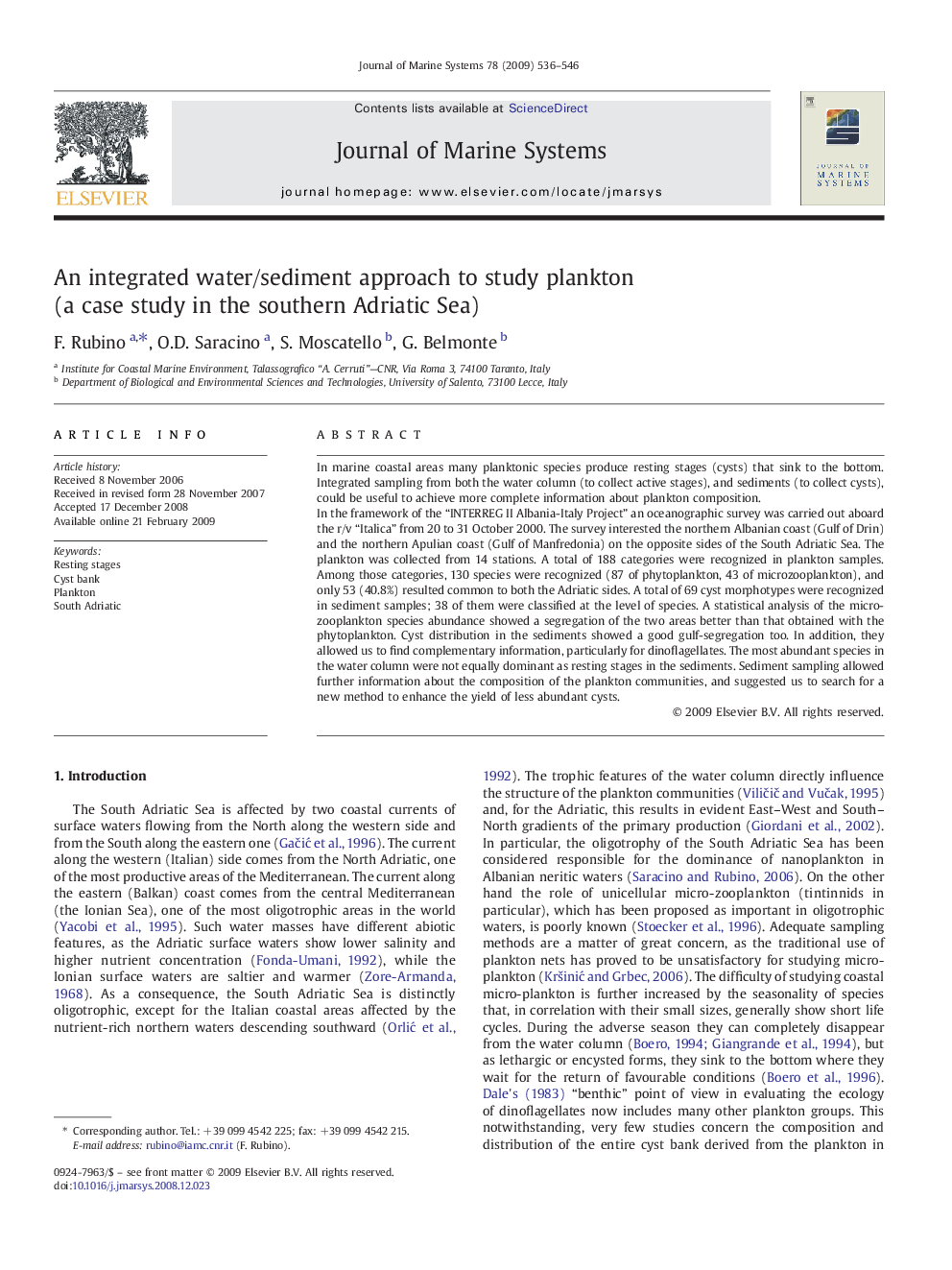| Article ID | Journal | Published Year | Pages | File Type |
|---|---|---|---|---|
| 4548678 | Journal of Marine Systems | 2009 | 11 Pages |
In marine coastal areas many planktonic species produce resting stages (cysts) that sink to the bottom. Integrated sampling from both the water column (to collect active stages), and sediments (to collect cysts), could be useful to achieve more complete information about plankton composition.In the framework of the “INTERREG II Albania-Italy Project” an oceanographic survey was carried out aboard the r/v “Italica” from 20 to 31 October 2000. The survey interested the northern Albanian coast (Gulf of Drin) and the northern Apulian coast (Gulf of Manfredonia) on the opposite sides of the South Adriatic Sea. The plankton was collected from 14 stations. A total of 188 categories were recognized in plankton samples. Among those categories, 130 species were recognized (87 of phytoplankton, 43 of microzooplankton), and only 53 (40.8%) resulted common to both the Adriatic sides. A total of 69 cyst morphotypes were recognized in sediment samples; 38 of them were classified at the level of species. A statistical analysis of the micro-zooplankton species abundance showed a segregation of the two areas better than that obtained with the phytoplankton. Cyst distribution in the sediments showed a good gulf-segregation too. In addition, they allowed us to find complementary information, particularly for dinoflagellates. The most abundant species in the water column were not equally dominant as resting stages in the sediments. Sediment sampling allowed further information about the composition of the plankton communities, and suggested us to search for a new method to enhance the yield of less abundant cysts.
